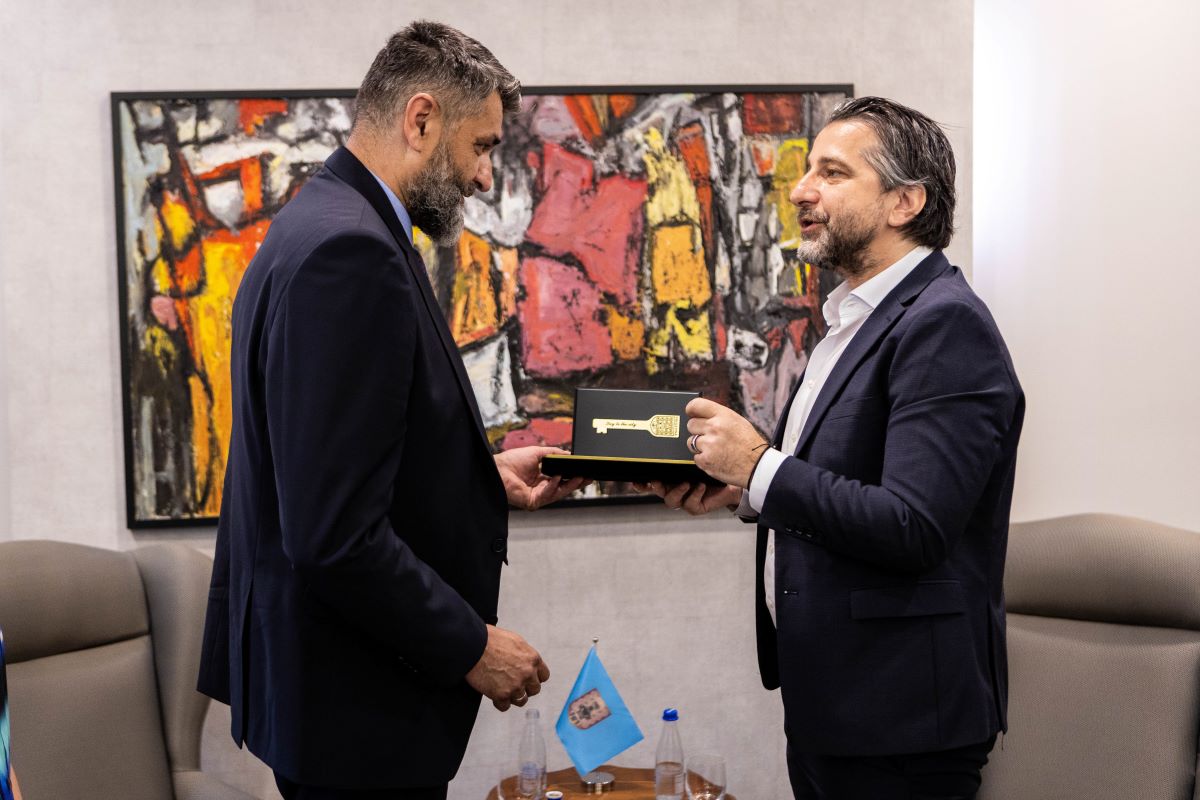

A three-month exhibition exploring media coverage of the war in Kosovo, and how artists have interpreted its legacy in the 25 years since, opened on Monday in Prishtina, encouraging survivors to tell their stories.
An exhibition which opened on Monday in Prishtina marks 25 years since the end of the Kosovo war and showcases media coverage of the war alongside artwork dealing with its legacy.
Presented by BIRN Kosovo, KALLXO.com, Prishtina Biennale and Paper Gallery, the three-month ‘Reporting House’ exhibition presents a cross-section of the journalism, photography and media artefacts of the time, positioned alongside contemporary artwork exploring and reflecting on the impact of the 1998-99 war in the decades since.
Jeta Xharra, director of BIRN Kosovo, told the opening press conference on Monday that a special testimony room has been installed in the exhibition located at Prishtina’s first trade centre, the Germia Department Store. “The room will serve people who come to visit the exhibition and want to tell their [own] experience,” Xharra explained.
The exhibition takes its name from BIRN’s ‘Reporting House’ museum and community space under preparation in Sarajevo, Bosnia, which aims to tell the story of Yugoslavia’s collapse through the prism of media coverage.
Emir Suljagic, Director of the Memorial Centre in Srebrenica, Bosnia, said many survivors of the former Yugoslav wars have testified to the violations committed against them in war crime trials, but “those thousands [of testimonies of] people who suffered that could not be used as evidence to convict perpetrators are important for our history.
“It is a crucial point in time, either we do it now or they [in Serbia] will do it for us,” Suljagic said, urging Kosovo to gather such testimonies as soon as possible.

BIRN in collaboration with the Memorial Centre in Srebrenica has interviewed 100 survivors of the 1995 Srebrenica genocide, ten of whom, according to Suljagic, have died since giving their interviews.
The Mayor of Prishtina, Perparim Rama, before the Reporting House press conference, gave Suljagic the key to the Kosovo capital. “We as people have been defined by our enemies, but that era is over,” he said when receiving the key.
David Loyn, a BBC correspondent during the Kosovo war, told the Reporting House press conference that foreign correspondents were important during the Kosovo war because they had a direct impact in prompting the international community to act.
“We knew that our reporting from Kosovo will change the course of events,” Loyn said, explaining that during the reporting on one massacre, a British politician was traveling with them in the armoured car that has now been placed outside the exhibition. “When he met [Serbian leader Slobodan] Milosevic in Belgrade, he told him: ‘I have seen the footage. This was something amazing. This story had a lot of impact,” Loyn recalled.
Vaughan Smith, a producer and cameraman for the BBC during the Kosovo war and founder of London’s Frontline Club, a venue that supports freelance journalists around the world, appreciating the work put in the exhibition, explained that the armored car, which he brought to the exhibition, “was used by journalists throughout Kosovo”.
Donika Shahini-Lami, a journalist from Kosovo who worked as a journalist and translator during the war for the Japanese Public Television NHK and KOMBI magazine, brought the notebook of the children of the Jashari family. A total of 59 members of this family, including women and children, were killed by Serbian forces from March 5-7, 1998.
“This notebook is the most important thing I have, after my two daughters,” she said, explaining that “the notebook presents a story. Those children had dreams, they were like everyone else,” she said.
Curated by Gazmend Ejupi, the Reporting House exhibition features 150 television stories from Kosovo between 1992 and 1999 by a range of foreign broadcasters, as well as photographs and print stories.
Contributors include the BBC’s Jeremy Bowen and Ben Brown, Magnum photographer Thomas Dworzak, Kosovar photojournalists Ilaz Bylykbashi and Hazir Reka, Andrew Testa of the New York Times, Frontline founder Vaughan Smith and others.
The exhibition will also present the work of Albanian artists Anri Sala and Adrian Paci, Goncalo Mabunda [Mozambique], Lala Meredith Vula [UK-Kosovo], Zhana Kadyrova [Ukraine], Lana Cmaijcanin [Bosnia and Herzegovina], Olafur Eliasson [Iceland-Denmark], Laura Imami [UK], and Besa Llugiqi, Vullnet Jakupi and Vita Kasapolli, all from Kosovo.
Besides the main exhibition in the Germia department store, the Great Hammam and Paper Gallery in Prishtina will host space for contemplation and dialogue, honouring the memory of those affected by the war in Kosovo and efforts towards the peaceful resolution of conflict.
10 June 2024 - 14:13

On Tuesday, Kosovo’s Special Prosecution filed an indictment for ter...

Special Prosecution indicts three over the explosion at the Iber Lepen...

The findings of a BIRN documentary detailing Kremlin-linked disinforma...

At a moment when democracy is increasingly shaped and shaken by digita...